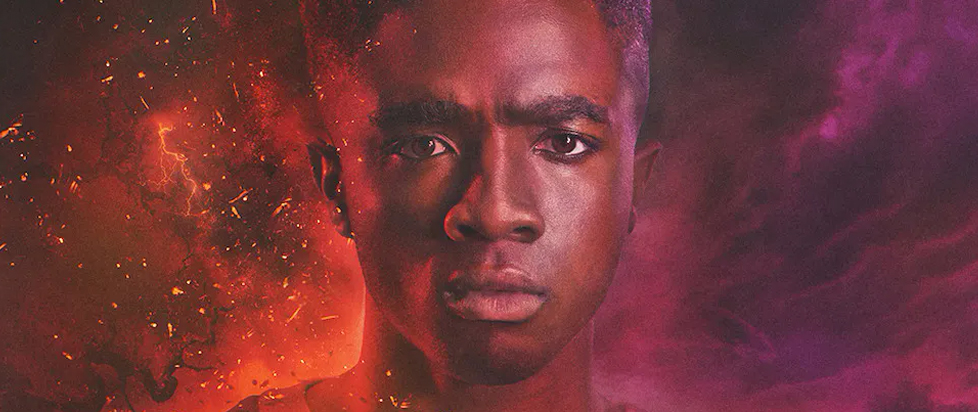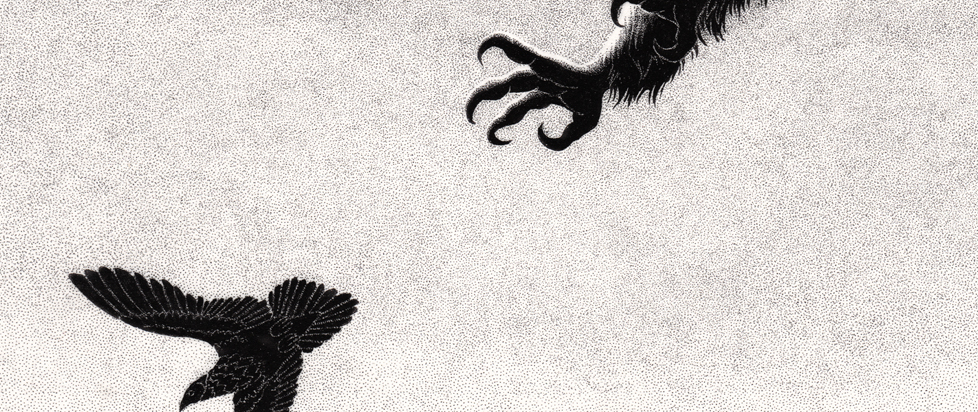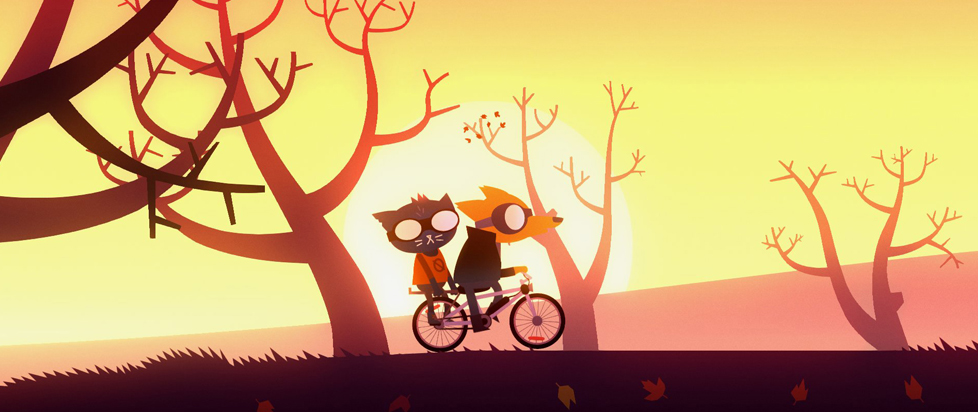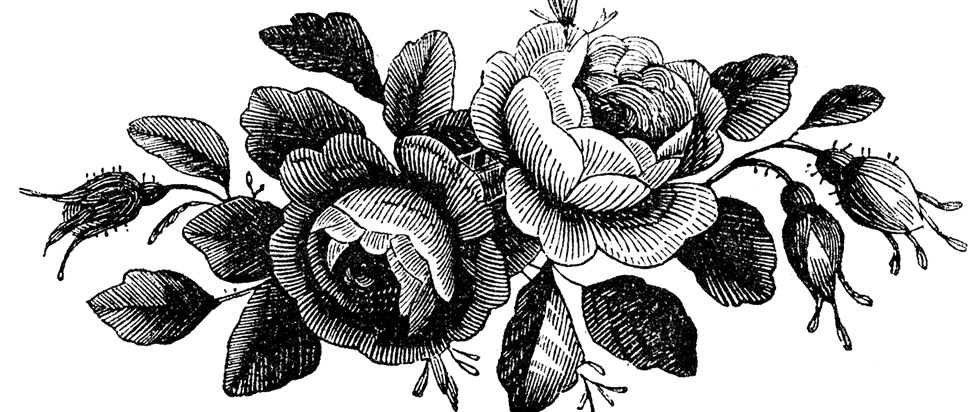
A Journey Through the Upside Down
This is a feature excerpt from Unwinnable Monthly #180. If you like what you see, grab the magazine for less than ten dollars, or subscribe and get all future magazines for half price.
———

It was the summer before I moved away for graduate school that Netflix’s Stranger Things came out. Much like everyone else, I binged the show in a few days. From the get-go, my favorite character in the series was Lucas Sinclair, the prototypical “only Black kid” in a friend group of white boys.
There’s so much to love about Lucas, he’s the sparkplug character of the group, fiery and always ready to take down the bad guys. He cares deeply about his friends and his relationships. He has that instinctual, “I told y’all we should have left this shit alone,” sixth sense that all Black folks have but no pasty soul in existence has ever listened to. And in future seasons, he’s the first one who’d rather spend more time talking to girls than playing Dungeons & Dragons. But most of all, I loved him because he is Black and he has major lines and he matters to the plot, and it’s also worth noting, he has a fucking slingshot.
* * *
My story starts with my father in a white hardhat standing in front of a chain link fence bordering a dirt lot near the entrance of Orchard Hills, a booming suburb in Grand Rapids, Michigan. By my math, I can’t be more than 8 years old and just nearing the end of second grade. I was a small kid with a big head and glasses that made me look like the Black Harry Potter. I wasn’t used to seeing my father dressed that way. Most days, I watched him leave through the garage in full suit, tie and briefcase. My parents had owned the previous two houses I’d grown up in, this would be the first (and only) house that they had built from the ground up. My father had such a sense of pride exuding from him that day as he showed us the property.
Over a decade later, after he lost his job as senior attorney at the biggest supermarket chain in the state, he tells me that building that house was one of the biggest mistakes he’d ever made. He tells me that they had been looking at houses in different, more diverse, parts of the city, but the real estate agent they worked with – a white woman who has been mythologized in my family canon for saying my brother resembled Will Smith – had pushed them to buy into this new development out in the white bread burbs away from downtown.
That day, he showed my family around the city pointing out all of the new sights and activities we’d be able to look forward to when we moved. Grand Rapids is a medium-sized city in west Michigan mainly known for its furniture industry, being very Dutch, very Christian and, most recently, its association with Betsy DeVos (not a great sell, I know). The Grand River runs through the middle of the city center, and in the summertime the rushing water looks like Vernors ginger ale fizzing up in a glass.

On the surface, my life was like any Hollywood depiction of growing up in the suburbs of a moderately-sized American city. I lived in a neighborhood meticulously planned out and cut-up into equally sized lots for McMansions that couples picked from a catalog. I imagine they answered big questions like: two car garage or four? Double staircase or single? Red, brown, or beige bricks? Across the street from the development was a community center equipped with a full gym, tennis court, an outdoor pool with winding waterslide that loomed in the distance when I walked out of my house to play every day.
I rode my bike through the neighborhood streets with friends. I played videogames like Tony Hawk Pro Skater 2 in my friend’s basements and drank enough Mountain Dew that, to this day, I’m surprised I’ve never had a cavity. When we moved into our house, a white woman from down the street knocked on our garage door and greeted us with a pie wrapped in a red gingham cloth. I lived in the modern equivalent to the shit Tobey Maguire got zapped into in Pleasantville. Of course, the difference being that I was Black, and even if life really were devoid of color, that still leaves the two that everyone notices.
When we moved to Orchard Hills, we were the only Black family, let alone family of color, on our entire block. I grew up under the shadow of being an outlier in any given situation. I was used to being the only Black kid in the classroom, in the friend group, on the soccer team, you name it.
* * *
In Hawkins, the Sinclairs, and Powell, the lone Black cop in the police force, seem to be the only Black people around. This isn’t necessarily unusual given the location and time period of Stranger Things, but there’s a lack of awareness to this fact in the show’s universe. Hell, we don’t even hear a character referred to as “Black.” In a show that partially centers around a girl who is othered by the fact that she grew up in isolation, in addition to having psychic powers that no one else has, I could see a story where someone like Lucas could bond with Eleven on a much deeper level than a kid like Mike. Lucas has a gift too that is far less acknowledged; Lucas isn’t navigating his existence through two dimensions like the rest of his friends are (their world and the Upside Down), he’s navigating through three (the White world, his own world, and the Upside Down). And, of course, all these dimensions exist in one world.
I think this would be giving the show too much credit, but if I were to allow the writers more grace than they deserve, I can see an argument that someone like Lucas might not be thinking about these things, at least overtly if he had a fairly good group of friends (which he does). I know I certainly wasn’t. When you go your entire life being the only one of something, that “abnormality” can start to feel very normal, it’s only when that difference is pointed out that you begin to notice it as such.
* * *

As I got older, I experienced countless situations where my race was pointed out in seemingly harmless ways. So many of my friends’ parents joked about me being their “Black son” if I came over for dinner or happened to run into them while over at their house. At times like these I’ve tended to laugh and joke around with them in reply, but these moments, years later, have left me feeling blindsided. I’m not their son, obviously, but their choice of wording – how they emphasized my Blackness is what gives me pause. I wasn’t their second son; I was their Black one. I don’t find these moments to be inherently insidious, but they point out the ripping facade of niceties in suburban life. They point out how the anti-Black constructions of Suburbia ask everyone involved to unsee the violence present in many aspects of these communities. It reveals that no one is left untouched by the grips of silence at the face of adversity and difference. Even good people cannot stop the venom from dripping from their mouths. When white folks fail to acknowledge race 99% of the time, the times that they do – whether they realize it or not – point to the machinations churning all around them.
The Upside Down is described as a parallel dimension to that of the human world in Stranger Things. Everything from the flora to the fauna is linked together in a hive-mind superorganism controlled by a being known as the Mind Flayer. The landscape of the Upside Down mirrors that of Hawkins but is devoid of human life. Buildings are overgrown, imploding bodies filled with toxic spores. Bathroom sinks spew out Black sludge. A thick fog covers everything making it hard to see what’s in front of you. Everything functions in the Upside Down to uphold the Mind Flayer’s wishes whether the various organisms realize it or not. The Upside Down is scary because it mirrors the human world. It presents the familiar in a frighteningly unfamiliar fashion. But what if the Upside Down wasn’t really in another dimension? What if it was a problem of sight, of being seen and seeing? Will and Eleven, for instance, are able to see the constructs of the Upside Down. It is a very real thing that is influencing their world and how they navigate it.

Suburbia has a way of erasing your experience and reconstituting it into something else, something wrapped in Saran wrap and brought to a neighborhood block party that your whole family complains about going to before putting on the most muscle-strained smile in existence and walking out the door. When I think back on my childhood, the images that come to mind feel unreal, as if I didn’t live in the memories that are conjured up, but instead have only been told I lived them. Maybe this is the result of how often life in the burbs is depicted in pop culture, especially the midwestern style of suburban living that media would like to sum up to be hot dogs with ketchup and mustard on the Fourth of July; country fairs where the country folk and suburban yuppies coalesce for a weekend; absent dads dawning aprons to grill meat every blue moon. It could be that, or maybe that’s just a nice way of saying my childhood was controlled by the white idealism of the ’50s that has only changed in aesthetics in the decades since.
This isn’t to say that I wasn’t having a good time growing up. To act as if I were consciously suffering would be hyperbole. I wasn’t thinking extensively in these terms while in Orchard Hills, and honestly, not much at all through my undergraduate years at Michigan State University. But when I look back at the life I’ve lived, I am now beginning to remove that Saran wrap to see the things that I covered up under the guise of preservation. I wasn’t drowning back then. If anything, I would liken growing up in this bubble to slowly dying from carbon monoxide poisoning, the damage is done long before you notice it.
There is a silent violence in middle class white folks’ insistence on colorblindness. For the white families that I grew up around, I don’t think that their voluntary blindness was meant to be malicious, at least in how they interacted with me. I imagine that for some people in my life I was the “Black friend” that these white folks used in their analogies for why they weren’t racist. So often people do things under good pretenses only for them to have harmful ends. Lucas’s reality, much like my own, is flattened when we fail to acknowledge his varied experiences from the rest of the boys.
Much of the Stranger Things problems in general revolve around this flattening of characters into nostalgia vessels for audiences to binge on weekends with not so much as a second thought. We see this with the increasingly toxic behavior of the “lovable” cop Hopper in and the queerbaiting they’ve done with Will’s character in Season 3. When the show fails to comment on the behaviors and lives of its characters, we all lose. What might young Black boys’ lives be like if they saw their struggles grappled with directly by characters like Lucas in mainstream productions? What might happen if you were to go your entire life only seeing your reflection in a mirror a handful of times?
In school there was an intoxicating quality to this erasure when trying to fit in. White supremacy asks us to give up a lot of ourselves to be a part of the in-crowd. The idea of what that world could be was so grand, wasn’t it? Access to all the high school parties and uh . . . bad sex? Looking back, maybe it’s not so grand, but I wasn’t thinking in those terms back then. And once you’re in it, yeah, you might get the invite to a few of those parties where everyone is throwing up by 9:00 pm, a couple people are getting laid while you sit in the other room and maybe during lunch you get an extra Uncrustable peanut butter and jelly sandwich, but what did you give up for that PB&J?
———
Phillip Russell is a Black writer and podcast producer. His writing explores the intersections between pop culture, Blackness, and our connection to land and identity. Follow his work on Twitter @3dsisqo.
You’ve been reading an excerpt from Unwinnable Monthly Issue 180.
To read the article in its entirety, please purchase the issue from the shop or sign up for a subscription to Unwinnable Monthly!




